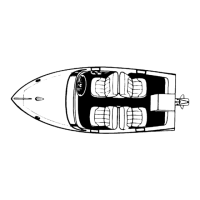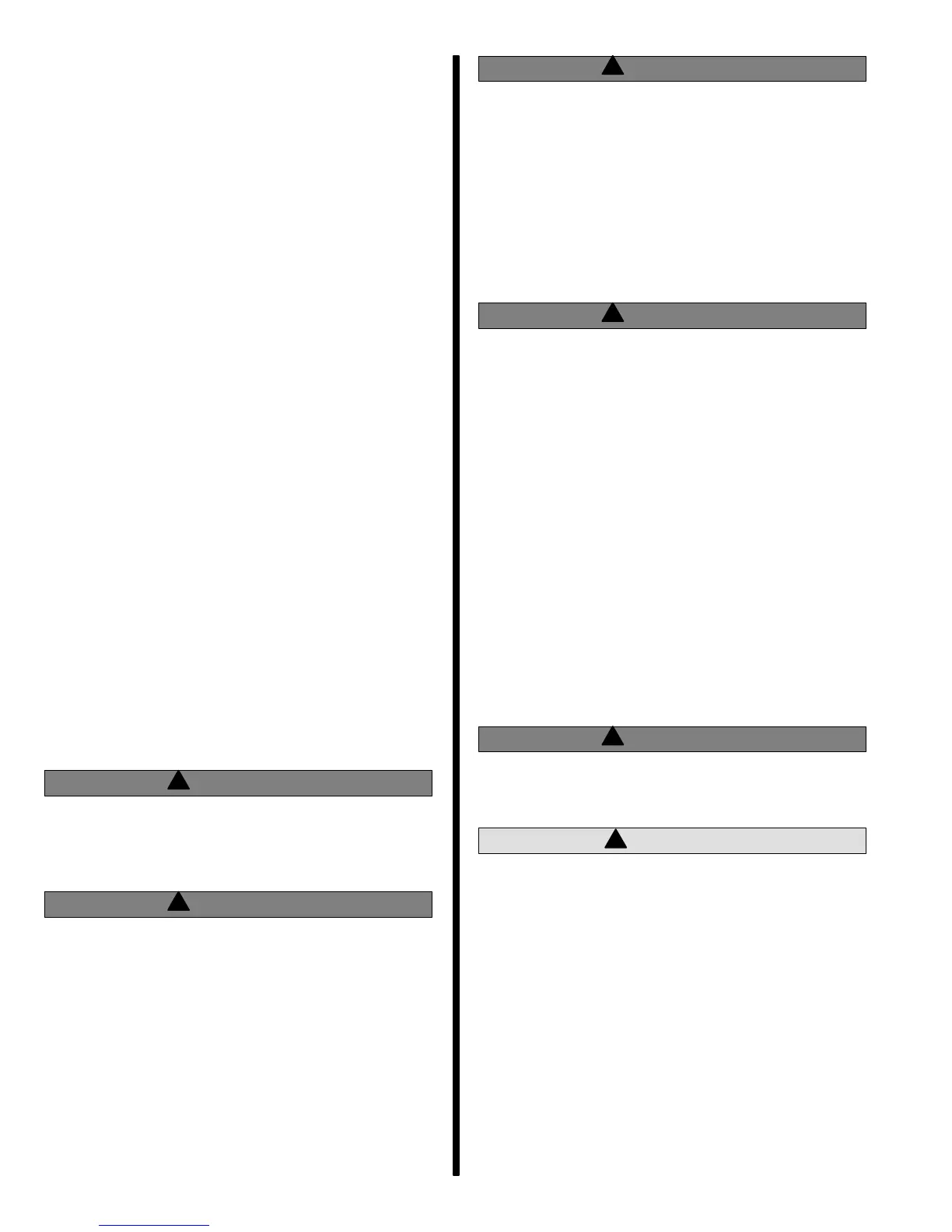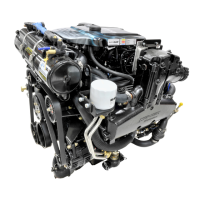5D-4 - WEBER 4 BARREL CARBURETOR 90-823225--1 1096
Description
Weber WFB carburetor is unique in design, as the
main body and flange are cast as a one piece unit.
This, along with the bowl cover, make up the two
piece construction which is made of light, durable
aluminum to dissipate heat.
There are two separate float circuits. Each float cir-
cuit supplies fuel to a primary low speed circuit and
a primary and secondary high speed circuit. The
bowls are vented to the inside of the air horn. A con-
necting vent passage effects a balance of the air
pressure between the two bowls.
The float needle valves are installed at an angle to
provide the best possible seating action on the
needles. This provides better needle response to
float movement, also.
The high speed circuits use staged step-up rods in
the main metering jets to control the amount of fuel
admitted to the nozzles. The position of the step-up
rod is controlled by manifold vacuum applied to the
vacuum piston.
A primary air bleed located in the venturi cluster pre-
vents a rich condition or bog as the high speed circuit
is reactivated after deceleration.
Small “L” shaped metal tabs, called “distribution
tab(s),” are attached to some venturi clusters and
protrude into the air stream at the proper location to
aid distribution of fuel on selected applications.
Precautions
!
WARNING
Always disconnect battery cables from battery
BEFORE working on fuel system to prevent fire
or explosion.
!
WARNING
Be careful when cleaning flame arrestor and
crankcase ventilation hose: gasoline is extreme-
ly flammable and highly explosive under certain
conditions. Be sure that ignition key is OFF. DO
NOT smoke or allow sources of spark or open
flame in area when cleaning flame arrestor and
crankcase ventilation hose.
!
WARNING
Be careful when changing fuel system compo-
nents: gasoline is extremely flammable and high-
ly explosive under certain conditions. Be sure
that ignition key is OFF. DO NOT smoke or allow
sources of spark or open flame in area while
changing fuel filter. Wipe up any spilled fuel im-
mediately.
Fuel Supply Connections
!
WARNING
Avoid gasoline fire or explosion. Improper instal-
lation of brass fittings or plugs into fuel pump or
fuel filter base can crack casting and/or cause a
fuel leak.
• Apply #592 Loctite Pipe Sealant with Teflon to
threads of brass fitting or plug. DO NOT USE
TEFLON TAPE.
• Thread brass fitting or plug into fuel pump or
fuel filter base until finger tight.
• Tighten fitting or plug an additional 1-3/4 to
2-1/4 turns using a wrench. DO NOT
OVER-TIGHTEN.
• Install fuel line. To prevent over-tightening,
hold brass fitting with suitable wrench and
tighten fuel line connectors securely.
• Check for fuel leaks.
!
WARNING
Make sure no fuel leaks exist, before closing en-
gine hatch.
!
CAUTION
DO NOT operate engine without cooling water
being supplied to water pickup holes in gear
housing or water pickup inlet, or water pump im-
peller will be damaged and subsequent overheat-
ing damage to engine may result.

